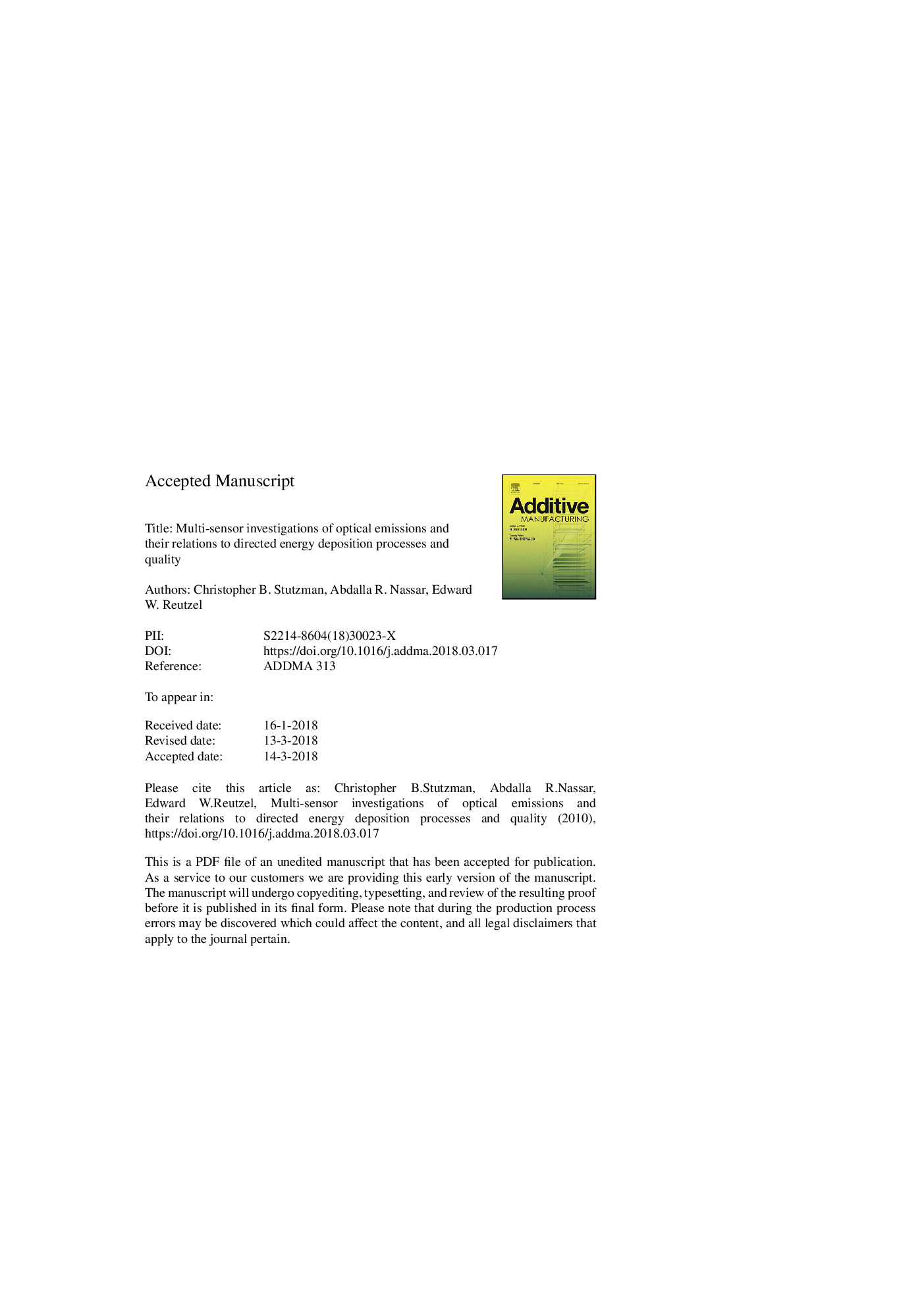| Article ID | Journal | Published Year | Pages | File Type |
|---|---|---|---|---|
| 7205892 | Additive Manufacturing | 2018 | 18 Pages |
Abstract
Optical Emissions Spectroscopy and plume imaging were utilized to investigate flaws generated during directed energy deposition additive manufacturing. Ti-6Al-4â¯V coupons were built using varying laser power, powder flow rate, and hatching pattern to induce random and systematic flaws. X-Ray Computed Tomography (CT) scans were completed on each part to determine flaw density and flaw locations. Three quantifiable metrics based on the state of the plume during processing are developed, analyzed and compared to the post-build CT scans: (1) line-to-continuum ratio around 430â¯nm, (2) line-to-continuum ratio around 520â¯nm, and (3) total plume area. For coupons built with constant laser power, variations in either powder flow rate or hatch pattern that led to an increase in flaw density were accompanied by an increase in median line-to-continuum ratios around 430 and 520â¯nm and in total plume area. It is also shown that all three metrics appear to measure the same phenomena, i.e. they are internally consistent with each other. These results present a path forward for real-time flaw detection and assessment of build quality in directed energy deposition and powder bed fusion processes.
Keywords
Related Topics
Physical Sciences and Engineering
Engineering
Industrial and Manufacturing Engineering
Authors
Christopher B. Stutzman, Abdalla R. Nassar, Edward W. Reutzel,
